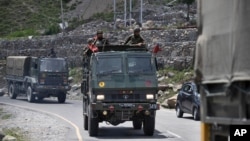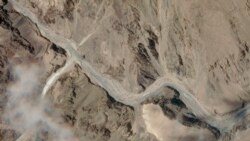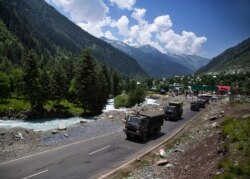A recent incident at the border between India and China high in the Himalaya Mountains has fueled tensions between the world’s two most populous countries.
The Indian Army said at least 20 of its soldiers were killed in direct fighting with Chinese troops on Monday. The fighting took place in the Galwan area of Ladakh, an area in the western Himalayas. Indian and Chinese forces have been facing each other there since May.
The incident appears to break an earlier agreement between the two countries. A deal signed in 1993 says neither country will use force at the Line of Actual Control. That is what the effective border is called. The two sides have not officially agreed on a border. Instead, the two militaries hold positions. Disputes periodically break into gunfire.
Difficult territory to reach
The disputed territory has sharp mountains and fast-flowing rivers. Most places are more than 4,000 meters above sea level. Some peaks are up to 7,700 meters high. Galwan is part of the 4,000-kilometer Himalayan border between the sides.
Military experts say one reason for increased tensions is that India has been building roads and airfields to improve transportation links. India is trying to match the infrastructure on China’s side. At Galwan, India completed a new road leading to an airfield. China objected to the additions.
Past conflict
The area has long been a point of conflict between the two nations. The latest incident marked the first deadly clashes there since the two sides fought in 1967. Hundreds were killed then.
China and India also fought a brief war in Ladakh in 1962. Today’s Line of Actual Control is based on the positions the militaries held after a ceasefire ended that war. But disputes remain because the territory is mountainous.
The last major dispute happened in 2017 in the Doklam Plateau area, near the border of India, China and Bhutan. Tensions eased after the two sides agreed to “expeditious disengagement” of troops, India’s foreign ministry said.
I’m Mario Ritter, Jr.
Reuters reported this story. Mario Ritter Jr. adapted it for VOA Learning English. Ashley Thompson was the editor.
________________________________________________________________
Words in This Story
expeditious –adj. done in a fast and efficient way
disengagement –n. to order a stop to fighting and to move away from an area









